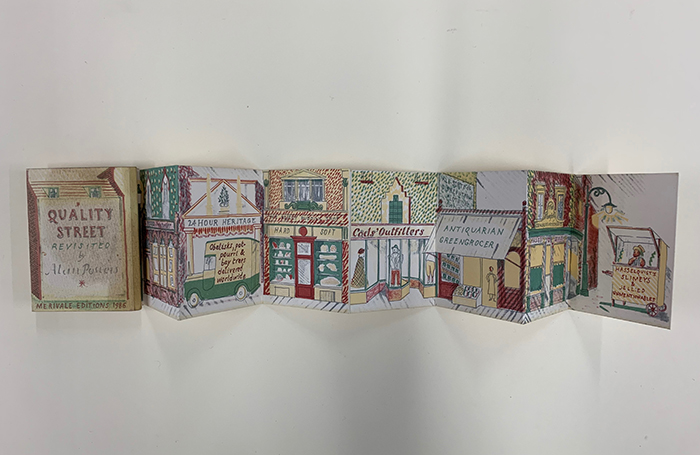Quality Street Revisited
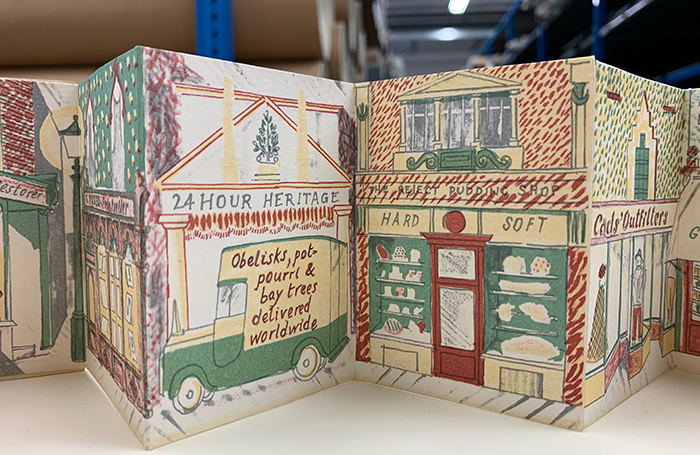
We found this fold-out Christmas card among the papers of the artist and designer Mary Adshead. It was designed and sent by the architectural historian and artist Professor Alan Powers, so for our final 'Advent in the Archive' entry we got in touch with him for the full story behind his creation.
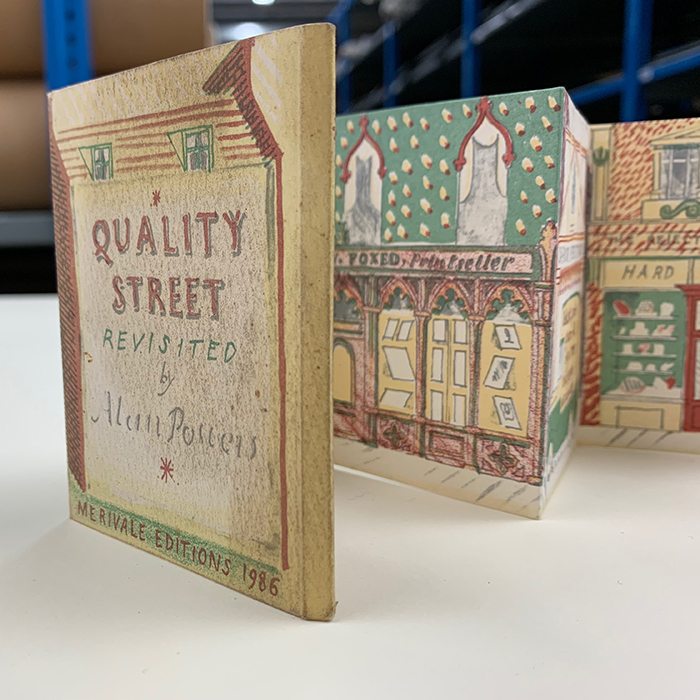
It started with a lunch at Joe Allen’s restaurant in Covent Garden in early November 1986. The publisher Peter Sampson had recently set up Merivale Editions, a line of specially commissioned affordable art prints, and he enlisted Alan to create two lithographs, which were of Sissinghurst Castle and Lord Berners' Folly. Peter explained he also wanted a Christmas card design, which would make use of the offcut from the standard-sized page on which the two architectural prints would be run.
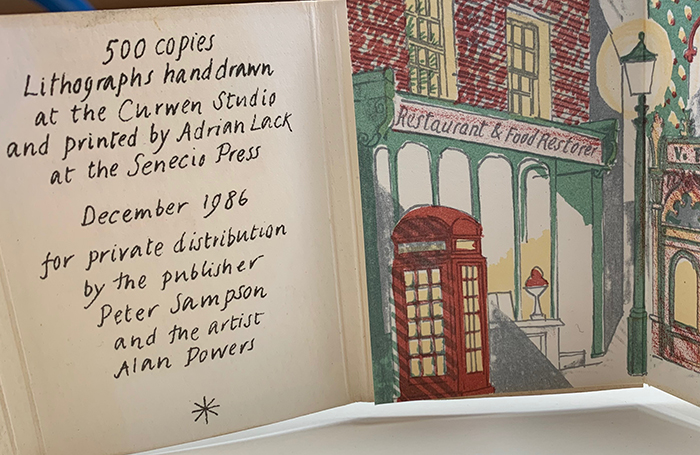
To make best use of the oddly proportioned sheet, Alan proposed a folding panorama. He was heavily engaged with the conservation movement at the time, which inspired the humour of the design. Some proponents of the movement behaved something like "a small cult group", says Alan, "among whom it became something of a competitive joke to adopt aspects of the past in their lifestyles, such as only having coal fires and no central heating". This phenomenon had recently been publicised in Alexandra Artley and John Martin Robinson's tongue-in-cheek 'New Georgian Handbook' (1985), and after that the joke was never quite the same again. "As soon as you make something too public, it begins to perish", says Alan, "and I decided that perhaps the whole conservation movement was in danger of going too far".
The first shopfront ('Restaurant and Food Restorer') was based on the house that Alan and his wife had just moved into and restored, while the 'Reject Pudding Shop' was a nod to the Reject China Shop chain. The whelk stall ('Hasselquist's Slimeys & Jellied Unmentionables'), with its grizzly shopkeeper, was an in-joke among friends of the historian and poet, Peter Davidson, who had a toy bear named Hasselquist that purportedly lived on a diet of beer and 'slimeys'. Hasselquist later reappeared in a 2007 iteration of Quality Street, called 'The City of Tomorrow Revisited’, with a stall that now offered 'sustainable slimeys’. Other buildings in the streetscape drew from sources including Alan's book on shop fronts in the ‘Chatto Curiosities of the British Street’ series and Eric Ravilious’s 'High Street'.
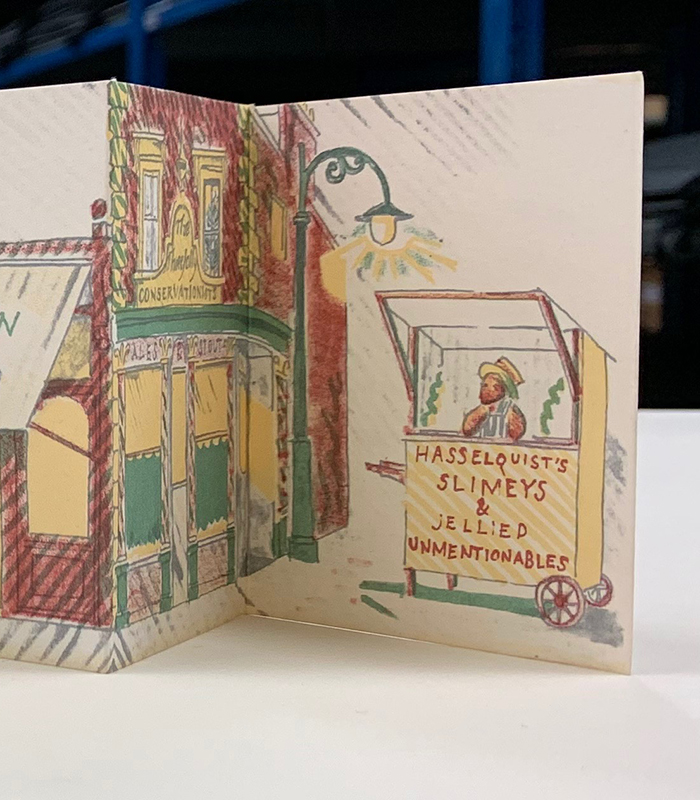
The prints were made from hand-drawn aluminium plates, drawn at the Curwen Studio in London and printed by Adrian Lack at the Senecio Press in Oxfordshire. The card was chopped off the sheet and die-cut with folding creases for assembly, with linen binding tape joining the two parts of the panorama and fixing them to the cover.
Some years later Peter said he still had the die cutter in his attic and would like to use it again, so Alan drew a new design to the same format called 'Neither Wall Nor City’. "Once I had done this", recalls Alan, "he discovered that he didn’t have the die after all, and had to have a new one made".
With thanks to Professor Alan Powers for sharing his recollections for this article.
Discover the RIBA Collections.
